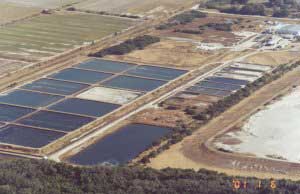
COVERING TAMPA BAY AND ITS WATERSHED |
Our subscribe page has moved! Please visit baysoundings.com/subscribe to submit your subscription request. |
||||||
|
Testing the Waters: By Mary Kelley Hoppe The December release of 400,000 fingerling redfish brings to more than four million the total number of hatchery reared reds released into Tampa Bay since 2000. It also marks a critical junction for a state-run pilot stock enhancement project entering its sixth year. Located at Port Manatee, the state's sole Stock Enhancement Research Facility is approaching 20 years old. Modernizing the aging facility will require a sizable investment. But while more than $800,000 in state and federal grants has been earmarked to upgrade the 54-acre fish park, port expansion is prompting a closer look at long-term tenancy. Construction and maintenance dredging through 2020 is expected to generate upwards of seven million cubic yards of material - a vast sum that will eventually eclipse current upland accommodations. Even after doubling the height of the dikes on the port's upland disposal site, from 26 to 55 feet, port officials expect to top out that stack and fill a nearby pit as early as 2010. As part of the General Reevaluation Report (GRR) for phase 3 of the port's expansion, the U.S. Army Corps of Engineers is evaluating long-term dredge material disposal options. One alternative is to reclaim the port-owned parcel now occupied by the state-run fish hatchery under the terms of a land management agreement. While this option was among those the Corps evaluated, the agency has recommended barging material offshore, after exhausting existing upland disposal, to an ocean disposal site with virtually unlimited capacity. "Even though it's a pretty good trot from the site," says Tim Murphy, a senior manager with the Corps, "ocean disposal comes out to be relatively inexpensive when you compare a clamshell/barge operation with the hydraulic dredge necessary to move material into upland disposal." Still, the issue is far from closed. After the Corps finalizes its draft GRR in March, the matter will be reviewed by Port Manatee. Manatee County also is likely to weigh in. Sources say the county may press for a more thorough evaluation of options, including the possibility of relocating the fish hatchery to nearby state lands, to bypass the less desirable choice of offshore disposal. "I look at this as more of a positive than a negative," says Bill Halstead, director of the fish hatchery. Even with short-term repairs being made, he adds, the present facility will never be capable of the kind of full-scale fishery production the state may want to pursue. "If Florida makes the decision to implement marine stocking on a larger scale throughout the state, it will take a lot more than this facility to do it," he says. The smaller facility would likely be relegated to RD. A lot hinges on the results of Project Tampa Bay, the state pilot project now underway. After testing the waters for more than five years - to gauge things such as fish survivability and ideal size at release - the hatchery is gearing up to initiate production-scale stock enhancement this Fall. That's when officials hope to start making a real impact on the fishery.
Betting on Junior For now, the state continues to study the economics of fish-rearing. While inch long fish are relatively inexpensive to produce - roughly 10 cents a pop versus a dollar or more to rear a six-inch, four-month old counterpart, the larger fish is 15 times more likely to survive. Analysts are still running the numbers to determine which size fish or size combinations are most cost-effective, a calculation that takes into account the costs to raise each size fish and the maximum number the hatchery can crank out at full production.
Barring complications, phase two of Project Tampa Bay is expected to continue for two to three years. Just last summer, an invasive parasite wrecked havoc on the hatchery's middle- to larger-size fish, forcing the termination of large numbers of fish and hindering data collection. The mystery parasite, which so far has only afflicted larger fish, recently resurfaced. How that will impact the overall project timeline is still unclear, but Halstead believes production will commence on schedule. "This is agriculture after all," says Halstead. "We can never be completely sure what kind of a crop we'll have."
|
|||||||
|
|||||||
|
© 2004 Bay Soundings
|
|||||||


 "We're talking about raising four to five million fish for a single release; that's as many as we released over the past five years," notes Halstead.
"We're talking about raising four to five million fish for a single release; that's as many as we released over the past five years," notes Halstead.